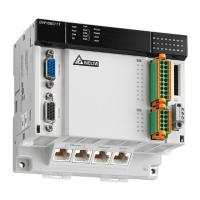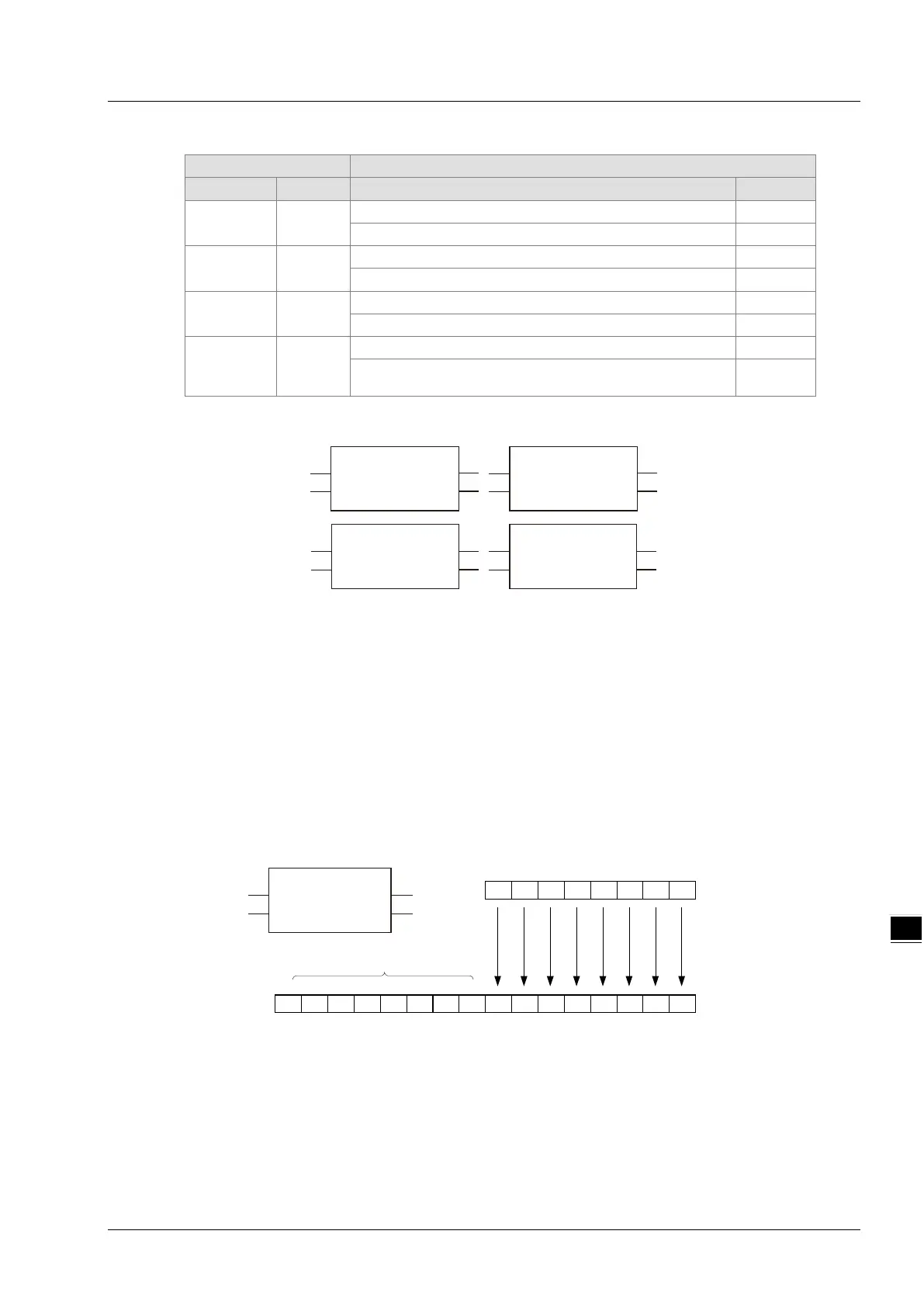Chapter 8 Logic Instructions
8-159
The rule that Bit-string data are converted into Boolean data is as the following table shows.
The value of In corresponds to the value of Out
BYTE BOOL
WORD BOOL
DWORD BOOL
16#0000_0001~16#FFFF_FFFF
LWORD BOOL
16#0000_0000_0000_0001~
16#FFFF_FFFF_FFFF_FFFF
TRUE
Bit string to Bit string
Bit-string data can be converted to Bit-string data. And some instructions are shown below.
There are two kinds of conversion for different types of bit-string data. One is the conversion of
the less-length data to the greater-length data. The other is the conversion of the greater-
length data to the less-length data.
The less-length data is converted to the greater-length data by writing the values of all bits of
the less-length data to corresponding bits of the greater-length data and setting the values of
the remaining bits of the greater-length data to 0.
See the following example that the Byte data in In is converted to the Word data in Out. The
values of Bit0~Bit7 of In are copied and pasted to Bit0~Bit7 of Out. And the values of
Bit8~Bit15 of Out are set to 0.
The greater-length data are converted to the less-length data by revising the values of all bits
of the less-length data into the values of the corresponding bits of the greater-length data and
the values of the remaining bits of the greater-length data are not converted and have no
impact on the conversion.
BYTE_TO_WORD
EN ENO
OutIn
1
01011
01
00000000
Bit0Bit7
In
Out
Fill 0
The less-length data are converted
to the greater-length data
10101101
Bit8Bit15
BYTE
WORD

